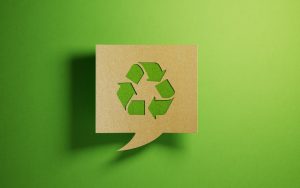What is sustainability and why is it important
What is sustainability and why is it important?
Sustainability is a much-used word, for example, sustainability can have a meaning in relation to the environment and climate, but it can also have a social and economic meaning. Because it is such a broad concept, it can be quite difficult to properly understand what sustainability actually means and why it is so important. The Van Dale Dictionary describes sustainable with 3 definitions; ”long lasting, subject to little wear and tear and causing little harm to the environment.” So sustainability is actually a word that indicates consideration of the impact that something has on the world now, but also for future generations, and the future of the earth. The ultimate meaning is to say: this has been thought about!
The importance of sustainability
What makes sustainability so important? The short answer to that is to save the earth. It is important not to deplete the earth; we can achieve this by dealing responsibly with raw materials and energy sources so that a livable environment also remains for future generations. Sustainability is essential for conservation, a stable earth, economy and society as a whole.
Social sustainability and environmental sustainability
Social sustainability focuses on improving and preserving the quality of life for people in both present and future generations. This focuses not only on the earth itself but this also involves social equity and inclusion, well-being, engagement and other social societal factors. Social sustainability focuses specifically on human well-being.
Environmental sustainability focuses on the living environment. Here you can think about the longevity of the living environment, no depletion of resources, no pollution and no negative impacts on nature and biodiversity. In addition, longer lasting products and developments that do not harm future generations. Sustainability focused on environmental protection helps preserve natural resources and reduce human impact on them, this is crucial to protect ecosystems and biodiversity.
Sustainable economy
Sustainable economy focuses on taking into account social and environmental aspects in your economy. This involves circularity and recycling. For example, reusing raw materials and products that are made to last. You could also think about borrowing, and it is becoming more popular to borrow clothes instead of buying but also reusing your water bottle or buying things second hand are good examples of this. Economic stability, sustainable development promotes an economy that is less dependent on exhausting resources.
Sustainability in relation to climate change focuses on preventing and reducing climate impact. Consider energy conservation, renewable energy, and emissions trading which focuses on greenhouse gas emissions, this is essential in the fight against climate change and its impacts.
Not self-evident
Despite all the wonderful initiatives, you cannot simply assume that everything labeled sustainable is truly so. A disadvantage of this term is that it is often used inappropriately and the wrong and misleading use of this is called greenwashing. It is therefore important not to simply assume that something is actually ‘sustainable’. A product or service that lasts a long time is sustainable during the use phase but not necessarily produced in a well-considered way. Fortunately, there are labels for this, which you can check in the label guide.
Compensate
Unfortunately, not everything can always be produced or exported sustainably. In that case, you can choose to offset your emissions, also known as climate compensation or CO2 compensation. This is not a solution to environmental and climate issues but offsets the emissions that are produced. A good example of something that cannot yet be completely sustainable is air travel to your favorite vacation destination. If you would still like to travel by plane or have to cross the ocean for a business trip, you can choose to offset the emissions from your flight. A good example is the option offered by the Foundation Adopt Rainforest. They use a handy tool to calculate how much CO2 your flight emits and compensate it by buying and protecting a piece of rainforest that stores just as much CO2. This way you help nature and travel with a better feeling.

 on with Utrecht University. The foundation was ready for a new step to professionalize the research project and Utrecht University was looking for a stable and reliable partner in Central America to conduct solid research in the rainforest. So for both parties this is a wonderful collaboration! Because of this we will make a big step in professionalizing our current research on biodiversity in our reserve. Together with the visiting students we will focus on scientific research in which the diversity and development of nature in our reserve, with an emphasis on flora, is central.
on with Utrecht University. The foundation was ready for a new step to professionalize the research project and Utrecht University was looking for a stable and reliable partner in Central America to conduct solid research in the rainforest. So for both parties this is a wonderful collaboration! Because of this we will make a big step in professionalizing our current research on biodiversity in our reserve. Together with the visiting students we will focus on scientific research in which the diversity and development of nature in our reserve, with an emphasis on flora, is central.